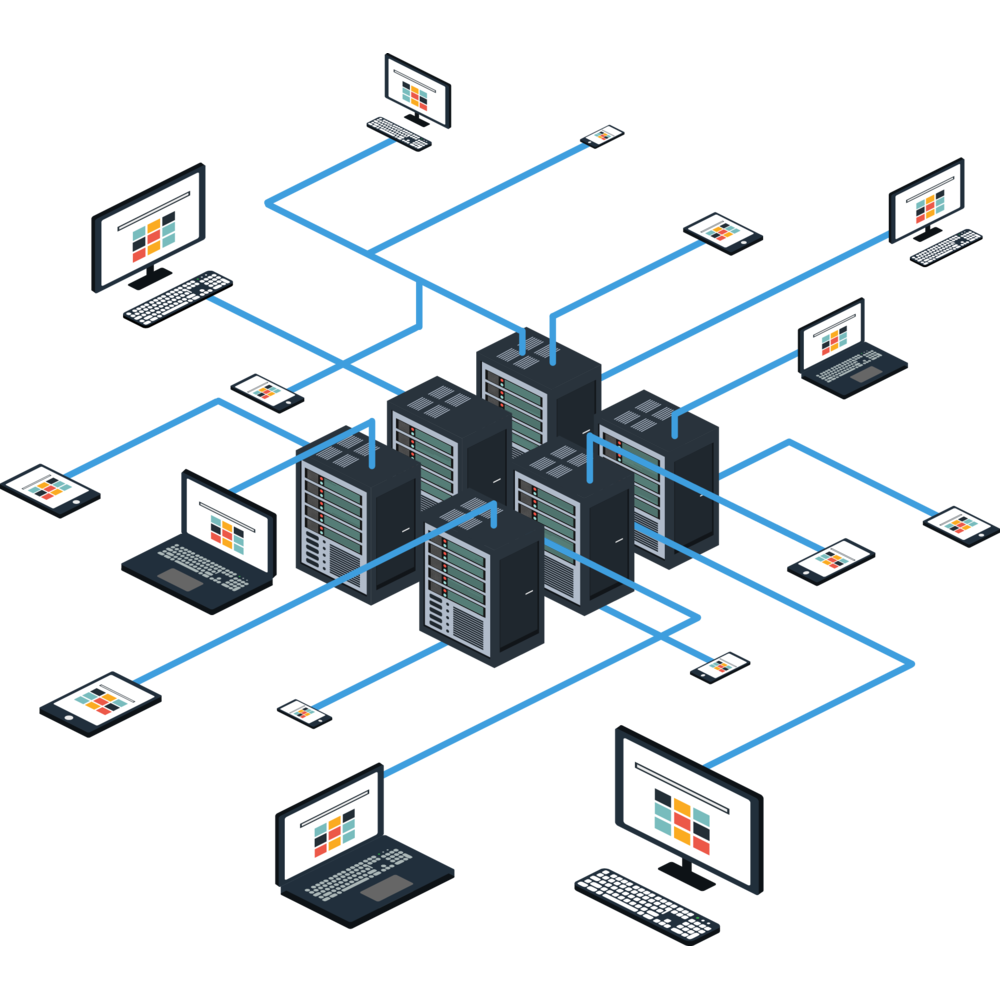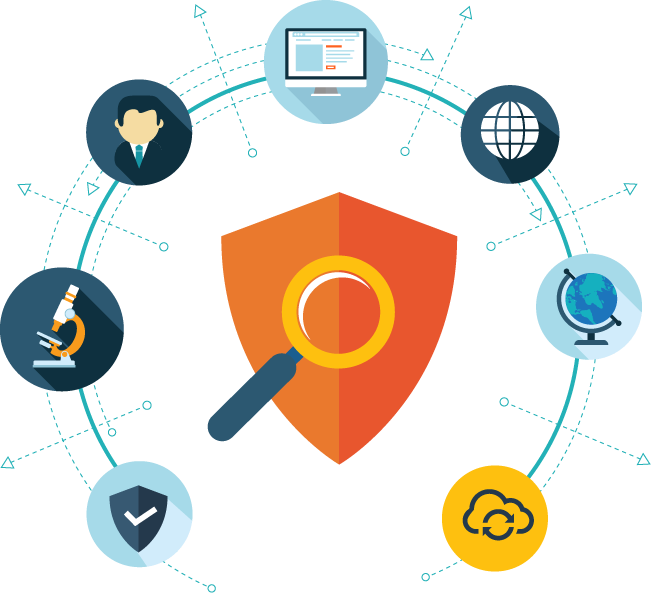
There is no silver bullet when it comes to penetration testing. But a well-planned engagement, delivered by an experienced team, can ensure that your security posture is at the level you perceive it to be, and where it should be.
The Cloud 7 penetration testing services are based on specific outcomes and success indicators, so you get accurate results.
Ensure the security of your applications and environments.
Determine whether your vulnerability assessment and management process have been successful.
Identify areas that require further security testing and investment.
Analyze the success of your vulnerability assessment and management processes.
Test and invest in areas that require further security testing.
Our penetration testing services

Web Application

Mobile

Infrastructure

Cloud
Do I need a penetration test?
A penetration test provides a point-in-time evaluation of the security of your assets or environments at a specific point in time. It is vital that your organization gathers this data annually, as well as:
In response to recent security incidents
Preparing for compliance audits
To prepare the ground for digital transformation
In order to protect your brand and get good publicity
Preparing for compliance audits
To prepare the ground for digital transformation
In order to protect your brand and get good publicity
In order to assess the risk of mergers and acquisitions
Adopting an existing security team
When developing new products and applications
Your team's output needs to be refocused and prioritized
Adopting an existing security team
When developing new products and applications
Your team's output needs to be refocused and prioritized

Infrastructure Penetration Testing
Infrastructure penetration testing by our
world-leading cybersecurity experts.

Its main goal is to identify where vulnerabilities exist in your computer systems that could allow unauthorized access or act as an entry point into your private network or sensitive information. This is accomplished by combining vulnerability scanning software with the latest disclosures that may affect your systems and professional manual penetration testing.

Testing your infrastructure includes internal environments, perimeters, and cloud environments. In addition to PCs and laptops, smartphones and Wi-Fi, it also applies to remote access and Wi-Fi. In the hacker’s view, every area is an opportunity to attack. It is possible to minimize these opportunities by reviewing your security as you would your buildings and physical assets.

You cannot form your strategy or decide where to deploy your defensive solutions by simply looking at vulnerabilities in your infrastructure. In order to help you make effective decisions regarding the security of your infrastructure, our penetration testers provide consultancy and advice before, during, and after an assessment.
In order to give you peace of mind, we develop robust yet flexible testing methodologies based on your specific infrastructure.
-
Scoping and planning
-
Mapping and enumeration
-
Automated vulnerability identification
-
Vulnerability exploitation
-
Post exploitation evidence
-
Reporting
-
Debrief
All assessments are followed by a comprehensive report including non-technical and technical descriptions, as well as recommendations for remediation. This will be sent directly to you after passing through Quality Assurance. Included in the report are:
-
Executive summary
-
Graphical summary
-
Overview of vulnerabilities
-
Technical analysis
-
Our testing methodologies
-
In order to give you peace of mind, we develop robust yet flexible testing methodologies based on your specific infrastructure.
-
Scoping and planning
-
Mapping and enumeration
-
Automated vulnerability identification
-
Vulnerability exploitation
-
Post exploitation evidence
-
Reporting
-
Debrief
-
-
Clear and concise follow-up reporting
-
All assessments are followed by a comprehensive report including non-technical and technical descriptions, as well as recommendations for remediation. This will be sent directly to you after passing through Quality Assurance. Included in the report are:
-
Executive summary
-
Graphical summary
-
Overview of vulnerabilities
-
Technical analysis
-
Web Application Penetration Testing
Web Application penetration testing by our
world-leading cybersecurity experts.
-
The availability of web applications 24×7 and the abundance of data they contain make them tempting targets for hackers. In our penetration testing, vulnerabilities are manually exploited to assess business risk in the way that only an expert tester can. By combining this with the best automated tools, we are able to achieve the best results.
-
All assessments are followed by a comprehensive report, which includes both non-technical and technical descriptions, as well as recommendations for remediation.
-
The risks are fully visible to you.
-
Unauthorised access to escalate privileges past authentication controls
-
Introduction of malicious code
-
Manipulation of the application’s function
-
Defacing of the website or causing disruption
-
Authentication testing
-
Gaining access to the hosting infrastructure
-
Applications must be secured throughout their entire lifecycle – from development to decommissioning. If your company uses DevOps methodology, the testing will be conducted using that methodology. The four areas are:
-
IAST: Interactive Application Security Testing
-
SAST: Static Application Security Testing
-
RAST: Run-Time Application Security Testing
-
DAST: Dynamic Application Security Testing.
The penetration testing we perform is tailored to your specific web application, and we have developed robust, yet flexible testing methodologies to assure you of complete security. In the tests, the application’s security posture is evaluated both from the perspective of authenticated and unauthenticated users.
-
Scoping and planning
-
Application mapping
-
Automated vulnerability assessment
-
Fault injection testing/fuzzing
-
Authentication testing
-
Session handling/authorisation testing
-
Cross-site request forgery (CSRF)/Clickjacking checks
-
Cookie security
-
Information disclosure observations
-
Post exploitation evidence
-
Report
-
Debrief
-
Our testing methodologies
-
The penetration testing we perform is tailored to your specific web application, and we have developed robust, yet flexible testing methodologies to assure you of complete security. In the tests, the application’s security posture is evaluated both from the perspective of authenticated and unauthenticated users.
-
Scoping and planning
-
Application mapping
-
Automated vulnerability assessment
-
Fault injection testing/fuzzing
-
Authentication testing
-
Session handling/authorisation testing
-
Cross-site request forgery (CSRF)/Clickjacking checks
-
Cookie security
-
Information disclosure observations
-
Post exploitation evidence
-
Report
-
Debrief
-
Remote Internal Penetration Testing
Remote Internal penetration testing by our
world-leading cybersecurity experts.
-
The availability of web applications 24×7 and the abundance of data they contain make them a tempting target for hackers. Manual exploitation of vulnerabilities is the key to our penetration test, so you get the assessment of business risk that only an expert tester can provide. By using the best automated tools, we combine this with manual testing.
-
An assessment is followed by a comprehensive report, including both technical and non-technical descriptions and recommendations for remediation.
-
Testing your network infrastructure remotely through a virtual machine deployed on your network.
-
In terms of quality or coverage, we use the same robust penetration methodology.
-
During and after an assessment, our penetration testers provide consultation and advice.
-
Faster turnaround
No logistical or geographical limitations on availability of the right skillsets.
-
Greater flexibility
More options to break assessments into sections for simultaneous delivery and faster completion.
-
Cost effective
No travel delays or expenses
-
Simple deployment
Easy set-up process.
-
Retesting
Validation of remediation work to address vulnerabilities made practical and cost-effective
We tailor penetration testing to your specific infrastructure and have developed robust yet flexible testing methodologies that will give you peace of mind.
-
Scoping and planning
-
Mapping and enumeration
-
Automated vulnerability identification
-
Vulnerability exploitation
-
Post exploitation evidence
-
Reporting
-
Debrief
-
Our testing methodologies
-
We tailor penetration testing to your specific infrastructure and have developed robust yet flexible testing methodologies that will give you peace of mind.
-
Scoping and planning
-
Mapping and enumeration
-
Automated vulnerability identification
-
Vulnerability exploitation
-
Post exploitation evidence
-
Reporting
-
Debrief
-
Continuous Security Testing
Security testing that delivers real-time, risk-graded reporting on the assets and vulnerabilities across your internal and external attack surface.
When an annual penetration test isn’t enough
In cybersecurity, testing is always on and dynamic. The attack surface of organizations is expanding as loT and hybrid working environments are introduced, as well as dynamic cloud environments. Devices, apps, and infrastructure are constantly changing. Dynamic environments exist. Your security posture is compromised if you don’t know what’s there.
Using Cloud7 Continuous Security Testing, you can uncover even the most complex vulnerabilities within your web-facing assets and IT systems through a combination of automated scanning and highly skilled, targeted manual penetration. They provide valuable context on the risks these assets and vulnerabilities pose to your organization.
Other consultancy services
Continuous Security Testing
Continuous Security Testing provides detailed, real-time, risk-graded reporting on assets and vulnerabilities across your internal and external attack surfaces through automated vulnerability monitoring and targeted manual analysis.
As part of a proactive patching and remediation plan, and throughout your entire systems development life cycle (SDLC), these insights can help close the risk window between strategic penetration tests that occur at points in time.
As part of a proactive patching and remediation plan, and throughout your entire systems development life cycle (SDLC), these insights can help close the risk window between strategic penetration tests that occur at points in time.
Social Engineering
Detailed data to help you assess the performance of your services. We provide six-month reports that include:
Your workforce is your first line of defence. Use social engineering assessments to train and educate employees, identify areas for improvement, and create a companywide passion for security
This understanding can be incorporated into proactive patching plans and the entire software development life cycle (SDLC) to help narrow the window of risk between point-in-time strategic penetration tests.
Your workforce is your first line of defence. Use social engineering assessments to train and educate employees, identify areas for improvement, and create a companywide passion for security
This understanding can be incorporated into proactive patching plans and the entire software development life cycle (SDLC) to help narrow the window of risk between point-in-time strategic penetration tests.
Code Review
Identify issues in your code before they are found in production. The purpose of this in-depth security review is to identify security flaws and insecure coding practices in your source code using manual and automated testing.
Red Teaming
Unlike penetration testing, which aims to identify all vulnerabilities, Red Teaming demonstrates whether an attacker could accomplish the same objective according to the cyber kill chain.
In red team exercises, no information about the target organization is provided. The test mimics a real outsider threat attack, starting with reconnaissance.
Customer's own blue team will attempt to prevent, detect, and respond to simulated attacks
In red team exercises, no information about the target organization is provided. The test mimics a real outsider threat attack, starting with reconnaissance.
Customer's own blue team will attempt to prevent, detect, and respond to simulated attacks


 Microsoft Azure
Microsoft Azure AWS
AWS Modern Workplace
Modern Workplace
